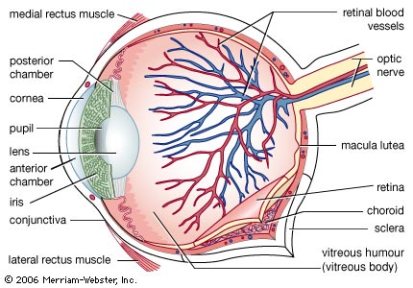A while back one morning, my son came wandering out into the living room rubbing his eyes and complaining that they felt funny. So I had him sit on the couch, and had a look. “Well, you’ve got some crust in your eyes,” I said, starting to (carefully) pull it off his eyelids.
“Why do I have crust in my eyes?” he asked.
“You know,” I answered, “I don’t know.” And I really don’t. I mean I’ve had it, you’ve had it, we’ve all had it. Usually just from normal sleep, when you wake up with dried little eye booger nuggets on your lashes. The worst I ever got it was the time I came down with conjunctivitis in college, and had to apply a damp cloth to my eye for several minutes in order to rehydrate the crust enough to [i]open my eye[/i] – a slightly terrifying experience, let me tell you. But I never gave it much thought, beyond assuming it was dried tears mixed with dirt, or mucous, or the like.
Kids. They make you think.
What is this eye crust stuff?
Eye crust, also known as “sleep” or rheum, is “a combination of mucus, oil, skin cells and other debris that accumulates in the corner of your eye while you sleep. It can be wet and sticky or dry and crusty, depending on how much of the liquid in the discharge has evaporated”. Which means that, for a change, my initial guess was correct. It’s dried “eye boogers”.
Wait, mucus? I thought that was a nose and/or sinus thing?
To tell the truth, so did I. Mostly, if pressed I’d have defined “mucus” as “that stuff I cough up, choke on, and sneeze out when I’m sick”. It certainly wouldn’t have associated it with eyes. So, what is mucus? Well, according to MedicineNet.com, mucus is “a normal, slippery and stringy fluid substance produced by many lining tissues in the body. It is essential for body function and acts as a protective and moisturizing layer to keep critical organs from drying out. Mucus also acts as a trap for irritants like dust, smoke, or bacteria. It contains antibodies and bacteria-killing enzymes to help fight off infections.”
The article also notes that on average our bodies produce between 1 and 1.5 liters (roughly 4 to 6.25 cups) of mucus per day and says that we “don’t tend to notice mucus at all unless its production is increased or the quality of mucus has changed, as may happen with different illnesses and conditions.”
So, yeah. That’s a lot of mucus.
Eye Mucus
Technically, eye mucus is called “mucins”, and are produced by the conjunctiva, a thin, semi=transparent mucus membrane (much like the membranes that line your nose and sinuses) that covers the white of the eyeball (known formally as the sclera).
The mucins work with tears to keep the eye moist and lubricated, so that you don’t scratch your eye up simply by blinking or looking around.
Should I be concerned about my eye crust?
Generally speaking, no. It’s a perfectly normal thing, caused by your tear ducts and conjunctiva [i]doing their jobs[/i] and then by evaporation. It might be a little uncomfortable to clean out once in a while, but as long as you don’t drive it into your eyeball and scratch things up the crust isn’t an issue.
Normally.
It can be an indicator of problems, though. Particularly if abnormally thick crust or discharge is combined with green, white, or yellow eye mucus. This can be a sign of such things as conjunctivitis, blepharitis, a stye, or a corneal ulcer or a blocked tear duct. In this case you should see your family doctor for a diagnosis and treatment. You don’t want to be taking chances with your eyes.
Lovely. Anything else?
Yeah. Have you ever woken up with a crust at the corner of your mouth? That’s also rheum.
